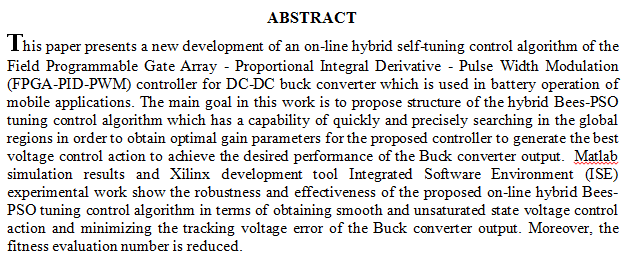
A new synthesis of Schiff (K) 6 and Mannich bases (Q) 7 had formed compound (Q) 7 by reacting compound (K) with N-methylaniline at the presence of formalin 35% to given Mannich base (Q). Additionally, new complexes were formed by reacting Schiff base (K) with metal salts CuCl2·2H2O, PdCl2·2H2O, and PtCl6·6H2O by 2:1 of M:L ratio. New ligands and their complexes were characterized, exanimated, and confirmed through several techniques, including FTIR, UV-visible, 1H-NMR, 13C-NMR spectroscopy, CHN analysis, FAA, TG, molar conductivity, and magnetic susceptibility. These compounds and their complexes were screened against breast cancer cells. It was determined that several of these compounds had a significant anti-breast cancer effec
... Show More (1)
(1)
Abstract
The miraculous of al-Quran has been surrounded by the attention of scholars, as it is the one that has astonished the rhetoricians with its eloquence. So , they paid attention to every part of it and hugely they studied it with accuracy in respect to its Surah ad Ayahs. It is considered the most important source from which Arab scholars and early grammarians drew, given their unanimity that it is the highest degree of eloquence and the best record of the common literary language.
Among these sciences is the science of Grammar, and without Qur’an, this science would not have emerged, which later had control over every science of Arabic
... Show MoreSphingolipids are key components of eukaryotic membranes, particularly the plasma membrane. The biosynthetic pathway for the formation of these lipid species is largely conserved. However, in contrast to mammals, which produce sphingomyelin, organisms such as the pathogenic fungi and protozoa synthesize inositol phosphorylceramide (IPC) as the primary phosphosphingolipid. The key step involves the reaction of ceramide and phosphatidylinositol catalysed by IPC synthase, an essential enzyme with no mammalian equivalent encoded by the AUR1 gene in yeast and recently identified functional orthologues in the pathogenic kinetoplastid protozoa. As such this enzyme represents a promising target for novel anti-fungal and anti-protozoal drugs. Given
... Show More (24)
(24)
 (25)
(25)
 (4)
(4)
The research discussed the possibility of adsorption of Brilliant Blue Dye (BBD) from wastewater using 13X zeolite adsorbent, which is considered a byproduct of the production process of potassium carbonate from Iraqi potash raw materials. The 13X zeolite adsorbent was prepared and characterized by X-ray diffraction that showed a clear match with the standard 13X zeolite. The crystallinity rate was 82.15% and the crystal zeolite size was 5.29 nm. The surface area and pore volume of the obtained 13X zeolite were estimated. The prepared 13X zeolite showed the ability to remove BBD contaminant from wastewater at concentrations 5 to 50 ppm and the removal reached 96.60% at the lower pollutant concentration. Adsorption measurements versus tim
... Show More (9)
(9)
 (58)
(58)
 (42)
(42)
In this paper, the complexes of Shiff base of Methyl -6-[2-(diphenylmethylene)amino)-2-(4-hydroxyphenyl)acetamido]-2,2-dimethyl-5-oxo-1-thia-4-azabicyclo[3.2.0]heptane-3-carboxylate (L) with Cobalt(II), Nickel(II), Cupper(II) and Zinc(II) have been prepared. The compounds have been characterized by different means such as FT-IR, UV-Vis, magnetic moment, elemental microanalyses (C.H.N), atomic absorption, and molar conductance. It is obvious when looking at the spectral study that the overall complexes obtained as monomeric structure as well as the metals center moieties are two-coordinated with octahedral geometry excepting Co complexes that existed as a tetrahedral geometry. Hyper Chem-8.0.7
... Show More (12)
(12)
The investigation of determining solutions for the Diophantine equation over the Gaussian integer ring for the specific case of is discussed. The discussion includes various preliminary results later used to build the resolvent theory of the Diophantine equation studied. Our findings show the existence of infinitely many solutions. Since the analytical method used here is based on simple algebraic properties, it can be easily generalized to study the behavior and the conditions for the existence of solutions to other Diophantine equations, allowing a deeper understanding, even when no general solution is known.
 (2)
(2)
